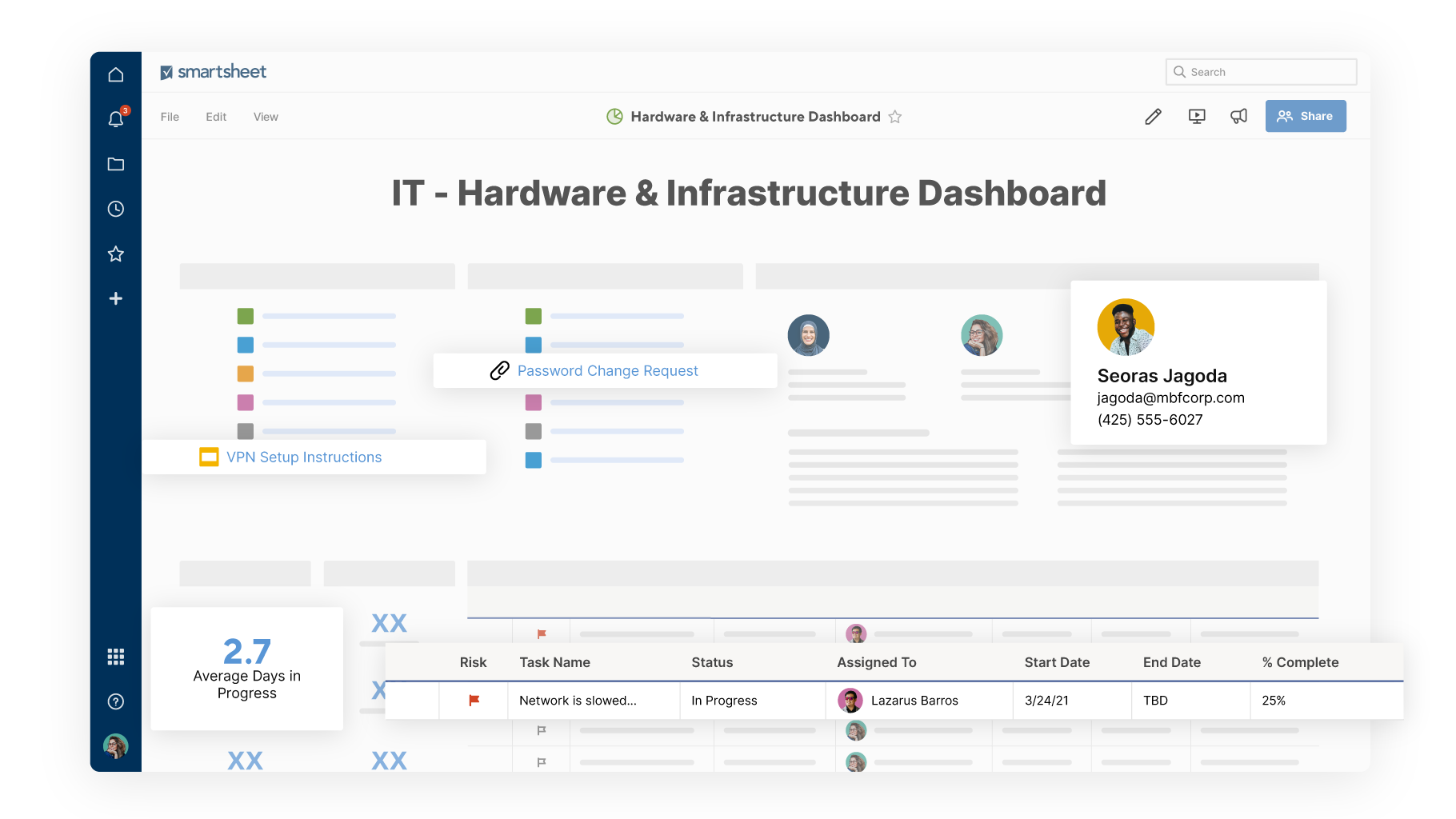What Is a Project Management Office (PMO)?
The purpose of a project management office is to help the organization deliver projects in a strategic and efficient way by standardizing policies and following project management methodologies. The structures, styles, and operating methods can vary among PMOs, and the jobs and functions depend on the type of organizational structure.
Some common areas of responsibility for PMOs include:
- Select and deploy a project management methodology
- Provide project management best practices and training to the organization
- Consult on or run organizational projects
- Choose project management technology
- Manage the organization’s portfolio of projects
- Handle project scheduling
- Maintain resources and templates for project processes
- Track and analyze project performance and effectiveness
- Identify and mitigate risks
- Ensure quality and consistency in projects
- Communicate with key stakeholders and team members
Additional Resources:
Implementing a PMO
If you decide that implementing a PMO is right for your organization, there are several steps you need to consider.
- Gain support from senior leadership. It’s important to set clear expectations and gain the buy-in of key leaders.
- Analyze your current state. Take inventory of your current project management strengths and weaknesses, and define strategic objectives.
- Develop your PMO concept. This step includes considering competencies and processes, hierarchical position, and team members.
- Set up the PMO. Pick you project management software, implement processes and methods, and communicate to the organization.
- Manage operations. Consult on or manage projects, promote transparency, and provide training as needed.
Most Common Challenges for PMOs
Although PMOs are associated with great success, there are some common pitfalls that can impact the outcome. It’s important that PMO leaders are aware of the challenges to hopefully mitigate issues before they arise. Here are some of the most common pitfalls of PMOs:
- Lack of clear accountability
- Unbalanced relationship with the organization
- Inexperienced PMO staff
- Lack of support from senior leadership or stakeholders
- Low visibility or credibility within the organization
- Misalignment on PMO objectives
- No defined policies, processes, and project workflows
- Lack of communication within projects and to the organization
Additional Resources:
Best Practices for PMO Success
Understanding the challenges that PMOs can face will help you to identify issues before they snowball out of control. Additionally, with a few best practices, you can set yourself and PMO up for success. Here are a few best practices for running a successful PMO:
- Scope management is crucial. If the scope of your project is your destination, then failing to stick to agreed-upon objectives makes it difficult to know when it’s successful.
- Choose the right tools. Selecting the right project management software and methodology helps connect teams, departments, and executives, and streamlines collaboration.
- Understand your team’s capacity. Knowing your team’s capabilities, relative to project scope, budget, and timeline, will enable you to quickly resolve issues as they arise over the course of projects.
- Be comfortable pushing back. When requests come in after-the-fact that may impact project delivery timelines or budget, don’t hesitate to push back and ensure you can accomplish your original objectives.
Additional Resources:
